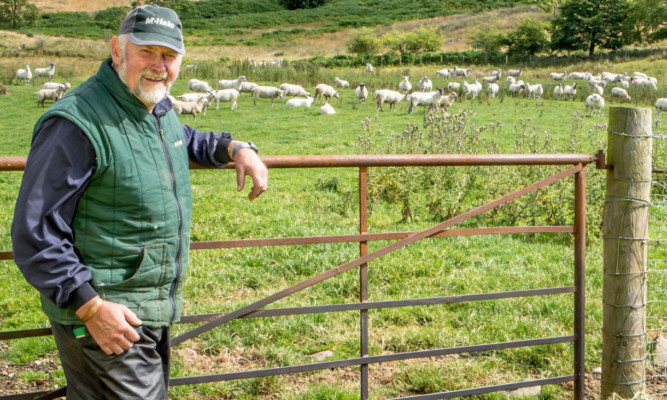Supplying the right product at the right time is critical to the profitability of everyone involved in the lamb supply chain from the farmer to the supermarket.
That is the focus of a meeting to be held at Tom Marshall’s Mains of Tig Farm at Ballantrae, Ayrshire, on Tuesday.
Mr Marshall runs 500 Scotch Mule ewes and 90 native cross suckler cows on 341 acres, which is mostly down to grass with 70 acres of first-cut silage and 20 second cut, plus about 36 acres of spring barley for home-use.
It will be the first time Mr Marshall has hosted a Lamb Supply Chain Group meeting on his farm and he is looking forward to hearing what the experts have to say on improving productivity.
As a director of the producer co-operative Ayrshire Country Lamb and also the procurement company Farm Stock (Scotland) Ltd, he is particularly interested in the follow-up visit to Scotbeef at Bridge of Allan to see how his lambs grade.
The meetings aim to enhance collaboration and communication in the supply chain, and improve productivity and profitability at all levels.
Mr Marshall said: “It looks as though we are going to have less Single Farm Payment (SFP) so we have to look at ways to get more from our produce and it is important for us, as farmers, to produce what the abattoirs want within the specification they require.”
The flock at Mains of Tig is closed, with Mule ewe lambs bred at Mr Marshall’s son’s farm, where there are 900 Blackface ewes.
He has also dabbled with Teeswater tups over the Blackies to get a more woolly type of Mule which survives better.
He adopts a similar policy with the Aberdeen-Angus and Shorthorn cross cattle and tries to buy in as little as possible.
Suffolk, Texel and Charollais tups are used and Mr Marshall has small flocks of pedigree Texel and Charollais to breed his own tups.
He believes each has its purpose, with Charollais being used on the gimmers for ease of lambing, Suffolk for some really early finishers and Texel for good growth and grades later in the year.
This year the lambing percentage at scanning was 181%, which was about 5% down on the year, but Mr Marshall said that the gimmers did not come on as well as usual after the poor grazing conditions last year.
Everything is lambed inside from March 26 and the aim is to sell as many lambs as possible off-grass.
The first of the Suffolk crosses are sold at 12 weeks old and this year he had sold 233 lambs by the end of last month.
The remainder are weaned on to silage aftermath, and only the last 100 or so are fed from a hopper.
Mr Marshall is particularly interested to hear from QMS Knowledge Transfer Specialist and grassland expert Michael Blanche, who will be speaking at the meeting alongside SAC Consulting’s Marion McMillan.
He said: “I am looking forward to learning about ways in which I can improve my grassland management.”
Mr Marshall takes care in drawing his lambs for Farm Stock and aims for a 19kg deadweight lamb with a good grade and not too fat.
So far 60% of his lambs have been R3L, 10% U grades and the remainder R3H or O2. He has only had one lamb out of the 233 sold so far which was a 4L.
Following the on-farm meeting where lambs will be drawn for the abattoir with the help of Ayrshire Lamb’s Colin Mair, Mr Marshall and the visitors will be invited to Scotbeef to see the lambs on the hook.
Bill McKinnon will then discuss and demonstrate the specification of lambs required to meet the target market, whether it be for export or UK supermarket.
To see the sheep unit at Mains of Tig on Tuesday and hear from the experts, please register your attendance with Kirsty at QMS on 0131 472 4040 or email info@qmscotland.co.uk
